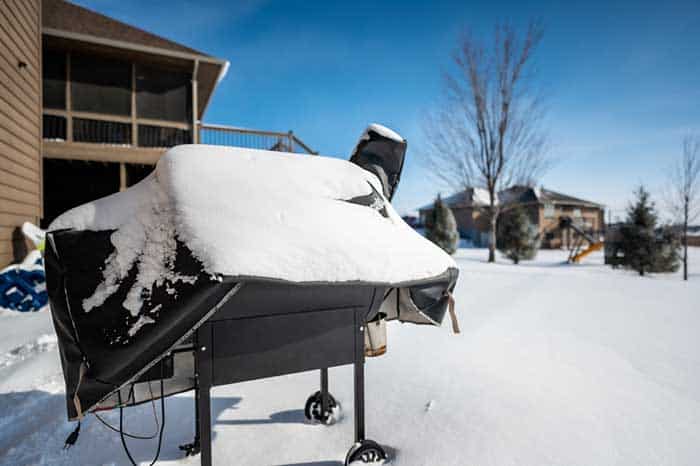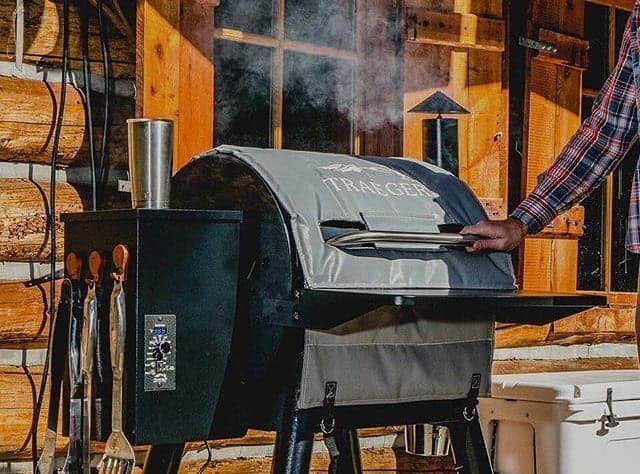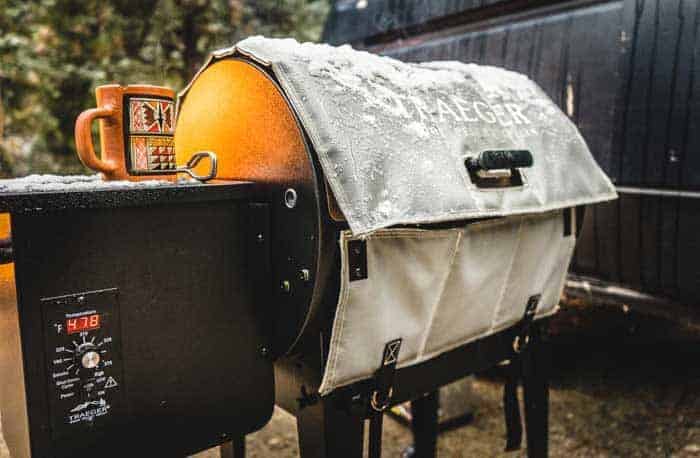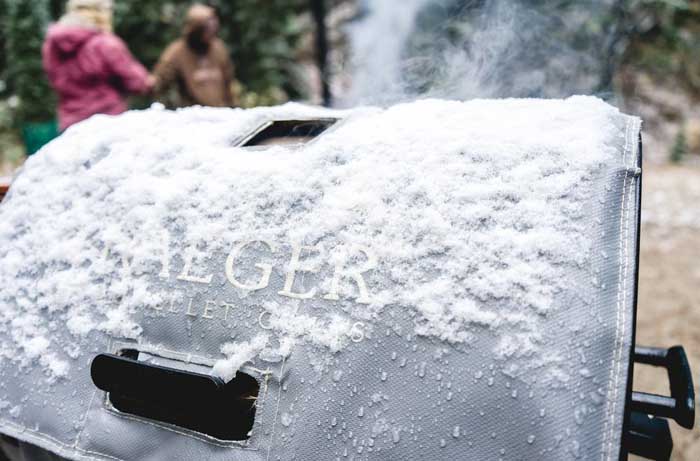Keep the Heat In: Tips and Tricks for Insulating Your Smoker
How to insulate a smoker? To insulate a smoker, wrap it with a heat-resistant material like aluminum foil, use insulation blankets specifically designed for smokers, or build a surrounding enclosure with heat-resistant materials to maintain consistent temperatures during smoking.
When it comes to smoking meat, achieving the perfect balance of heat and smoke is crucial. One often overlooked aspect of this process is insulation. Insulating your smoker can make a significant difference in the quality of your smoked meats. It helps to maintain a consistent temperature, reduces heat loss, and improves fuel efficiency. In this article, we will explore the importance of insulation in smoking meat and discuss the benefits it can bring to your cooking experience.
Insulation plays a vital role in maintaining a steady temperature inside your smoker. Without proper insulation, heat can escape easily, leading to fluctuations in temperature and uneven cooking. This can result in overcooked or undercooked meat, ruining the overall flavor and texture. By insulating your smoker, you create a barrier that helps to retain heat and maintain a consistent temperature throughout the cooking process.
In addition to temperature control, insulation also helps to reduce heat loss. Heat loss occurs when the heat generated by your smoker escapes into the surrounding environment. This can happen through various avenues such as the walls, doors, and vents of your smoker. Insulation acts as a barrier, preventing heat from escaping and ensuring that it is directed towards cooking your meat. By reducing heat loss, you can achieve more efficient smoking and save on fuel costs.
Understanding Heat Loss: How Insulation Can Help
To understand how insulation can help reduce heat loss in smokers, it’s important to first understand how heat loss occurs. Heat loss happens through conduction, convection, and radiation.
Conduction occurs when heat is transferred through direct contact between two objects. In the case of a smoker, this can happen when the hot interior walls come into contact with the cooler exterior walls. Without insulation, the heat will transfer from the hot walls to the cooler ones, resulting in heat loss.
Convection is another form of heat loss that occurs when hot air escapes from the smoker. As the hot air rises, it creates a pressure difference that causes it to escape through any openings or gaps in the smoker. This can happen through poorly sealed doors, vents, or even gaps in the construction of the smoker.
Radiation is the third form of heat loss and occurs when heat is emitted as infrared radiation. This can happen through the walls of the smoker, especially if they are not properly insulated. Without insulation, the heat will radiate outwards, resulting in heat loss.
Insulation helps to combat these forms of heat loss by creating a barrier that prevents heat from escaping. It acts as a buffer between the hot interior of the smoker and the cooler exterior, reducing heat transfer through conduction. Additionally, insulation helps to seal any gaps or openings in the smoker, preventing hot air from escaping through convection. By reducing heat loss, insulation allows for more efficient smoking and better temperature control.
Types of Insulation: What to Consider
When it comes to insulating your smoker, there are several types of insulation materials to consider. Each type has its own pros and cons, so it’s important to choose one that suits your needs and preferences.
One common type of insulation used in smokers is fiberglass insulation. Fiberglass is a lightweight and affordable option that provides good thermal insulation. It is easy to install and can be cut to fit any size or shape of smoker. However, fiberglass can be irritating to the skin and respiratory system if not handled properly. It also has a lower resistance to moisture, so it may not be suitable for smokers that are exposed to outdoor elements.
Another option is ceramic fiber insulation. Ceramic fiber is a high-temperature insulation material that can withstand extreme heat. It provides excellent thermal insulation and is resistant to moisture and chemicals. However, ceramic fiber can be more expensive than other types of insulation and may require professional installation.
Foam board insulation is another popular choice for smokers. It is lightweight, easy to install, and provides good thermal insulation. Foam board insulation is also resistant to moisture and can be cut to fit any size or shape of smoker. However, it may not be as durable as other types of insulation and can degrade over time.
DIY Insulation: How to Do It Yourself
If you’re a handy person and enjoy do-it-yourself projects, you can insulate your smoker yourself. Here is a step-by-step guide on how to insulate your smoker:
1. Choose the type of insulation material that suits your needs and preferences. Consider factors such as cost, thermal insulation properties, and ease of installation.
2. Measure the dimensions of your smoker to determine how much insulation material you will need. Take into account the walls, doors, and any other areas that require insulation.
3. Prepare the smoker by cleaning it thoroughly and removing any debris or grease.
4. Cut the insulation material to fit the dimensions of your smoker. Use a utility knife or a saw, depending on the type of insulation material you are using.
5. Apply adhesive to the back of the insulation material and press it firmly onto the walls of the smoker. Make sure to cover all areas that require insulation, including the doors and vents.
6. Secure the insulation material in place using screws or nails, if necessary.
7. Seal any gaps or openings in the smoker using high-temperature silicone caulk or heat-resistant tape.
8. Allow the adhesive to dry completely before using your smoker.
By following these steps, you can effectively insulate your smoker and improve its performance.
Pre-Made Insulation: Pros and Cons
If you prefer a hassle-free option or don’t have the time or skills to insulate your smoker yourself, pre-made insulation is a convenient choice. Here are some pros and cons of using pre-made insulation for your smoker:
Pros:
– Convenience: Pre-made insulation is ready to use and requires minimal installation. It saves you time and effort compared to DIY insulation.
– Customization: Pre-made insulation is available in various sizes and shapes to fit different types of smokers. You can easily find one that suits your specific needs.
– Performance: Pre-made insulation is designed to provide optimal thermal insulation and reduce heat loss. It is often made from high-quality materials that are durable and long-lasting.
Cons:
– Cost: Pre-made insulation can be more expensive than DIY insulation, especially if you have a large smoker or require a custom size.
– Limited options: The range of pre-made insulation options may be limited compared to DIY insulation. You may not find the exact type or thickness of insulation you are looking for.
– Installation limitations: Pre-made insulation may not be suitable for all types of smokers. Some smokers may require custom installation or modifications to accommodate the pre-made insulation.
Overall, pre-made insulation offers convenience and performance, but it may come at a higher cost and with some limitations.
Common Insulation Materials: Which Ones Work Best
When it comes to choosing the right insulation material for your smoker, there are several options to consider. Each material has its own benefits and drawbacks, so it’s important to choose one that suits your specific needs.
Fiberglass insulation is a popular choice for smokers due to its affordability and thermal insulation properties. It is lightweight, easy to install, and provides good heat retention. However, fiberglass can be irritating to the skin and respiratory system if not handled properly. It also has a lower resistance to moisture, so it may not be suitable for smokers that are exposed to outdoor elements.
Ceramic fiber insulation is another common choice for smokers, especially those that require high-temperature insulation. Ceramic fiber can withstand extreme heat and provides excellent thermal insulation. It is also resistant to moisture and chemicals. However, ceramic fiber can be more expensive than other types of insulation and may require professional installation.
Foam board insulation is a lightweight and affordable option for smokers. It provides good thermal insulation and is resistant to moisture. Foam board insulation is also easy to install and can be cut to fit any size or shape of smoker. However, it may not be as durable as other types of insulation and can degrade over time.
Another option is high-temperature insulation tape or rope. This type of insulation is often used to seal gaps or openings in the smoker. It is made from heat-resistant materials such as fiberglass or ceramic fiber and can withstand high temperatures. High-temperature insulation tape or rope is easy to install and provides a tight seal, reducing heat loss.
When choosing the right insulation material for your smoker, consider factors such as cost, thermal insulation properties, durability, and ease of installation. It’s also important to follow the manufacturer’s recommendations and guidelines for proper use and installation.
Insulation Placement: Where to Focus
When insulating your smoker, it’s important to focus on the areas that require the most insulation. These areas are typically where heat loss occurs the most, so proper insulation is crucial.
The walls of the smoker are one of the main areas that require insulation. Heat can easily escape through the walls, especially if they are not properly insulated. Insulating the walls helps to retain heat and maintain a consistent temperature inside the smoker.
The doors of the smoker are another critical area that requires insulation. Poorly sealed doors can allow hot air to escape, resulting in heat loss and temperature fluctuations. Insulating the doors helps to create a tight seal and prevent heat from escaping.
Vents and chimneys are also areas that require insulation. These openings can allow hot air to escape through convection, leading to heat loss. Insulating the vents and chimneys helps to reduce heat loss and maintain a steady temperature inside the smoker.
It’s important to thoroughly inspect your smoker and identify any areas that may require additional insulation. By focusing on these areas, you can effectively reduce heat loss and improve the performance of your smoker.
Sealing Your Smoker: Tips for Keeping Heat In
In addition to insulation, proper sealing is crucial for keeping heat in your smoker. Here are some tips for sealing your smoker and preventing heat loss:
1. Check for gaps or openings in the smoker. Inspect the walls, doors, vents, and chimneys for any areas where hot air can escape. Use high-temperature silicone caulk or heat-resistant tape to seal these gaps.
2. Ensure that the doors of the smoker are properly aligned and close tightly. If necessary, adjust the hinges or latches to create a tight seal.
3. Use gaskets or seals around the doors to create an airtight seal. Gaskets are available in various materials such as fiberglass or silicone and can be easily installed using adhesive.
4. Inspect the vents and chimneys for any gaps or openings. Use high-temperature silicone caulk or heat-resistant tape to seal these areas and prevent hot air from escaping.
5. Consider using a chimney cap or damper to control the airflow and prevent heat loss through the chimney.
By properly sealing your smoker, you can minimize heat loss and maintain a consistent temperature throughout the cooking process.
Insulation Maintenance: How to Keep Your Smoker in Top Shape
To ensure that your smoker’s insulation remains effective, it’s important to properly maintain it. Here are some tips on how to keep your smoker’s insulation in top shape:
1. Regularly inspect the insulation for any signs of wear or damage. Look for cracks, tears, or gaps in the insulation material. If you notice any issues, repair or replace the insulation as necessary.
2. Clean the insulation regularly to remove any grease, debris, or buildup. Use a mild detergent and warm water to gently clean the insulation. Avoid using harsh chemicals or abrasive cleaners that can damage the insulation material.
3. Check the seals and gaskets around the doors for any signs of wear or damage. Replace them if necessary to ensure a tight seal.
4. Inspect the vents and chimneys for any obstructions or buildup. Clean them regularly to ensure proper airflow and prevent heat loss.
5. Store your smoker in a dry and protected area when not in use. Moisture can damage the insulation material and reduce its effectiveness.
By following these maintenance tips, you can prolong the life of your smoker’s insulation and ensure optimal performance.
Insulation and Fuel Efficiency: Saving Money and Resources
One of the significant benefits of insulating your smoker is improved fuel efficiency. By reducing heat loss, insulation helps to maximize the heat generated by your smoker, resulting in better fuel efficiency. Here are some ways in which insulation can help you save money and resources:
1. Reduced fuel consumption: Insulation helps to maintain a consistent temperature inside your smoker, reducing the need for constant fuel consumption. With proper insulation, you can achieve more efficient smoking and use less fuel overall.
2. Longer burn times: Insulation helps to retain heat inside the smoker, allowing for longer burn times. This means that you can smoke your meats for extended periods without having to constantly add fuel.
3. Consistent temperature control: Insulation helps to minimize temperature fluctuations, allowing for more precise temperature control. This means that you can achieve the desired cooking temperature more easily and avoid wasting fuel on unnecessary heat adjustments.
4. Less heat loss during cold weather: Insulation is particularly beneficial during cold weather when heat loss is more significant. By insulating your smoker, you can maintain a steady temperature even in colder conditions, reducing the need for additional fuel to compensate for heat loss.
By improving fuel efficiency, insulation can help you save money on fuel costs and reduce your environmental impact. It allows you to smoke your meats more efficiently and effectively, resulting in better-tasting results.
Final Thoughts: Insulation as a Key to Perfect Smoking
In conclusion, insulation plays a crucial role in achieving the perfect smoking experience. It helps to maintain a consistent temperature, reduces heat loss, and improves fuel efficiency. By properly insulating your smoker, you can achieve better temperature control, more even cooking, and improved flavor and texture in your smoked meats.
Whether you choose to insulate your smoker yourself or opt for pre-made insulation, it’s important to consider the type of insulation material that suits your needs. Fiberglass, ceramic fiber, and foam board insulation are common options that provide good thermal insulation properties.
Proper insulation placement and sealing are also essential for preventing heat loss. Focusing on the walls, doors, vents, and chimneys of your smoker can help to minimize heat loss and maintain a steady temperature.
Regular maintenance of your smoker’s insulation is crucial for optimal performance. Inspect the insulation regularly for any signs of wear or damage and clean it regularly to remove any grease or debris.
By insulating your smoker and maintaining its insulation, you can achieve better results in your smoking endeavors. Improved temperature control, reduced heat loss, and enhanced fuel efficiency are just some of the benefits that insulation can bring to your smoking experience. So why wait? Start insulating your smoker today and take your smoking game to the next level.
Originally posted 2024-02-07 01:11:57.




